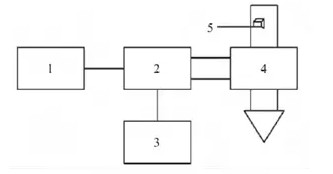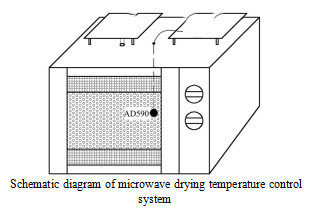
- Shandong Microwave Machinery Co.,Ltd.
- To be the Leader of microwave drying and edible oil refining equipments Manufacturer
Home> Company News> Study on Quality and Antioxidant Activity of Ganoderma Lucidum Fermented Tea by Different Drying Methods
- AddressNo. 225, Huangqiao Village, Beiyuan, Tianqiao District, Jinan, Shandong, China
- Factory AddressNo. 225, Huangqiao Village, Beiyuan, Tianqiao District, Jinan, Shandong, China
- Phone(Working Time)+86 0531 85064681
- Phone(Nonworking Time)0086-15020017267
- Fax+ 86 0531 85064682
Study on Quality and Antioxidant Activity of Ganoderma Lucidum Fermented Tea by Different Drying Methods
2018-11-14 15:14:00
Abstract: After drying the Ganoderma lucidum fermented tea by two different drying methods, hot air drying and microwave drying equipment, the sensory evaluation of the obtained fermented tea was carried out, and the chemical composition and oxidation resistance of the fermented tea were determined.

The results showed that hot air drying and microwave drying had certain effects on the sensory score, chemical composition and oxidation resistance of tea. The fermented tea with high temperature hot air drying and high microwave power was more durable and taste better. Under hot air drying, the fermented tea dried at 90 °C has more active ingredients, and the fermented tea dried at 80 °C has higher oxidation resistance; under microwave drying, the fermented tea is dried with 50W power, and the active ingredient retention is better. Good, high antioxidant resistance.
Key words: Ganoderma lucidum fermented tea microwave drying; drying method; quality; oxidation resistance
Bacterial tea is a new type of tea prepared by inoculating medicinal fungi with tea as the main culture medium and adding other food and medicine as auxiliary materials. Large-scale medicinal fungi such as microorganisms will produce a variety of enzymes in the process of metabolism, degrading the polysaccharides in tea leaves as oligosaccharides, and at the same time increasing the unique aroma of medicinal medicinal bacteria for tea leaves, resulting in new The active ingredient, therefore, has a good health care effect, and is a new research topic in tea beverages.
Some researchers have developed different fermented teas by inoculating different strains in tea. For example, after Zou Ligen compounded pollen in tea, he fermented with basidiomycetes to develop a succulent fungus pollen tea solid beverage; Lin Xinjian Inoculation of Cordyceps sinensis, medlar, and Hericium erinaceus in tea leaves, and different medicinal bacteria health-fermented teas are obtained.
Drying is a crucial step in the processing of tea. There are many ways to dry tea. Hot air drying and microwave drying are more common. Different drying conditions can cause different sensory qualities of tea, and also affect the antioxidant properties of tea. Some researchers have found that many diseases of the human body have a certain relationship with free radicals. The intermediate products produced by oxidized free radicals can damage the cell biofilm and cause abnormal biological functions of living cells.
The effects of different drying methods on the quality and antioxidant activity of Ganoderma lucidum fermented tea have not been reported. Therefore, this study inoculated Ganoderma lucidum strains in tea, carried out solid fermentation, and sensory evaluation of the obtained fermented tea, and fermented tea. The quality and oxidation resistance were measured, and the effects of drying methods on tea quality and oxidation resistance were discussed to provide reference for promoting the diversification of new fermented tea.
 High efficiency food beverage factory stone paper production line
High efficiency food beverage factory stone paper production line Factory price Fully automatic Machine PP/PS Plastic Sheet Production Line
Factory price Fully automatic Machine PP/PS Plastic Sheet Production Line used deformered bar rolling mill production line
used deformered bar rolling mill production line Manufacturing plant automatic factory puffed sticky rice cracker production line
Manufacturing plant automatic factory puffed sticky rice cracker production line Production Line Pp Ppr Plastic Pipe Making Machine 20-63mm Multi-layer Extrusion Production Line For Water Supply
Production Line Pp Ppr Plastic Pipe Making Machine 20-63mm Multi-layer Extrusion Production Line For Water Supply